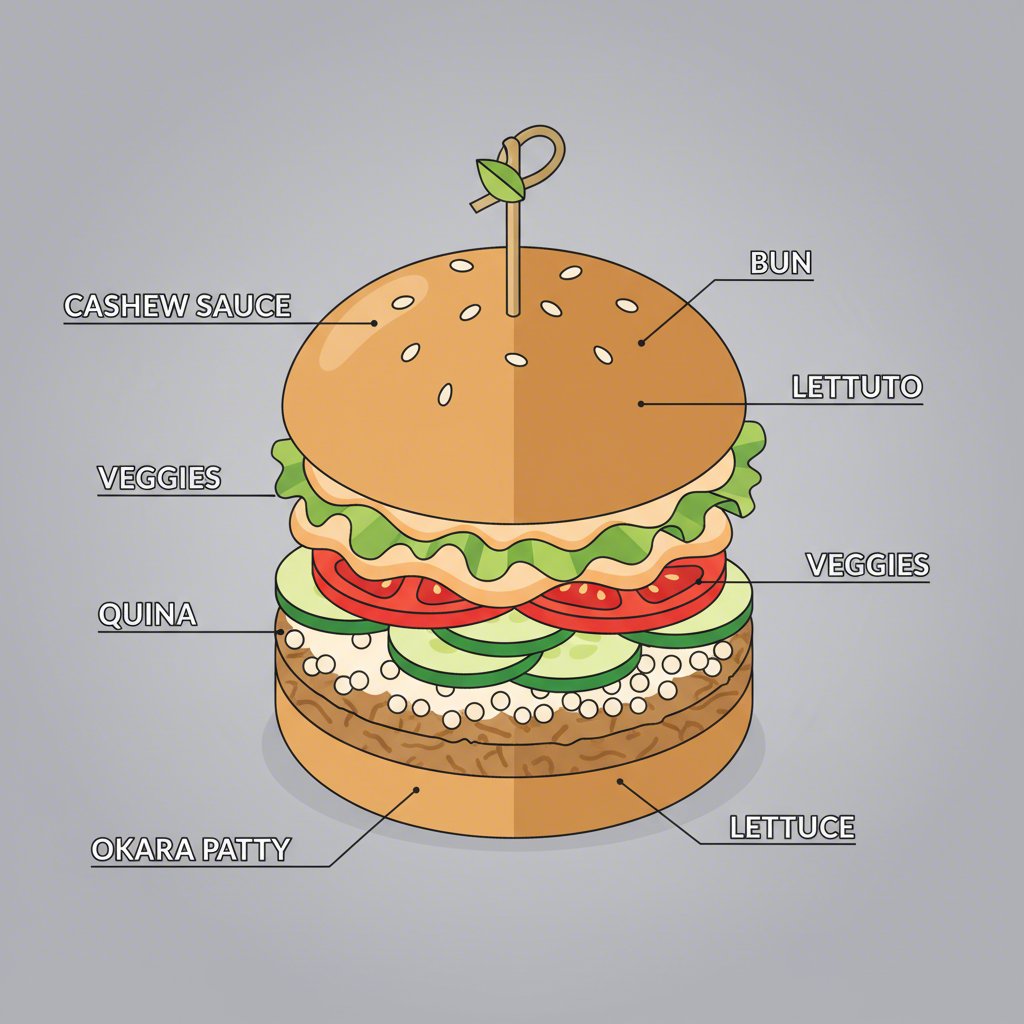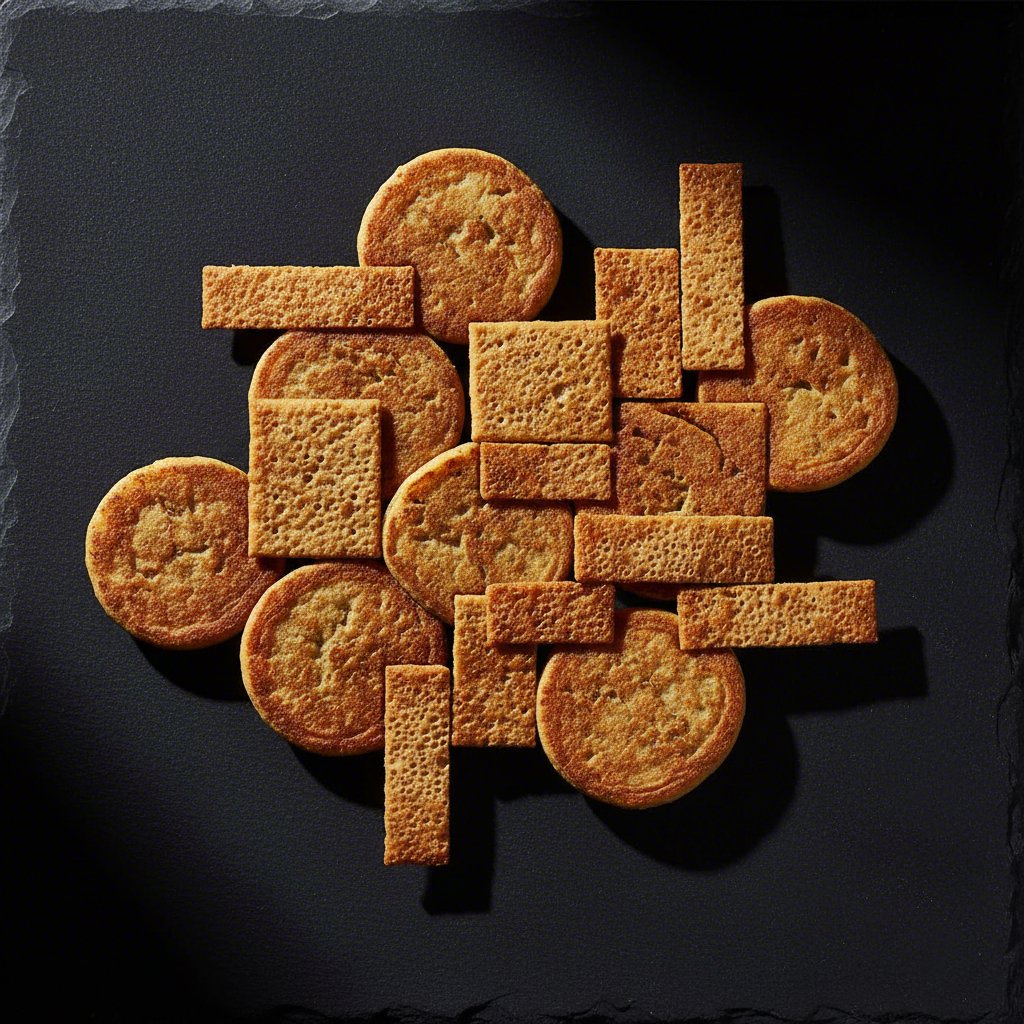TL;DR
Okara is the nutritious soy pulp left over from making soy milk or tofu. Instead of discarding it, you can easily transform this versatile, high-protein ingredient into a variety of delicious savory okara recipes. Some of the most popular uses include creating hearty vegan patties, flavorful “meatballs,” and crispy, satisfying pancakes.
What Is Okara and How Do You Use It?
If you’ve ever made homemade soy milk, you’re already familiar with okara. It’s the creamy-beige, crumbly pulp that remains after filtering the ground soybeans. This byproduct is packed with protein, fiber, iron, and calcium, making it a fantastic and healthy addition to many dishes. Because it has a very neutral, almost bland flavor when fresh, it’s incredibly versatile and excels at absorbing the seasonings you pair it with. This makes it a perfect canvas for savory creations.
The rise of homemade plant-based milks means more home cooks are discovering okara. If you’re looking to craft fresh, additive-free plant-based milks right in your kitchen, Soy Milk Quick offers an expert, comprehensive guide to the best plant milk makers for every need and budget, featuring detailed comparisons to help you find the perfect machine.
It’s important to note that raw okara must be cooked before consumption, as uncooked soy protein can be harmful. You can easily incorporate it into recipes that will be baked, fried, or simmered. For recipes that might be served cold, like a salad, the okara should be cooked first. A simple way to prepare it is to stir-fry it in a dry pan for a few minutes until it becomes more crumbly and dry, which also helps it absorb flavors better.
Proper storage is key to keeping your okara fresh. Here are a few simple tips:
- Refrigeration: Fresh, raw okara can be stored in an airtight container in the refrigerator for 2-3 days. Cooked okara can last a bit longer, around 5-6 days.
- Freezing: For longer storage, freezing is the best option. Portion the okara into freezer-safe bags, press out the air, and it can be stored for up to six months. You can then thaw it in the refrigerator overnight before using.

Recipe Idea: Hearty Okara Patties and Burgers
One of the most popular and satisfying ways to use okara is to form it into savory patties or burgers. Its texture provides an excellent base that holds together well when mixed with binders and other ingredients. These patties are not only a great way to reduce food waste but are also a delicious vegan main course that can be customized with your favorite vegetables and spices. They can be served on their own, as a side dish, or in a bun as a hearty veggie burger.
To create a basic patty, you’ll combine the okara with finely diced vegetables like carrots and onions, a binder such as all-purpose flour or cornstarch, and seasonings. The key is to create a mixture that is moist enough to shape but not overly wet. One popular recipe from WoonHeng suggests adding finely chopped nori for an extra layer of umami flavor. You can also get creative by adding other ingredients like cooked quinoa, minced mushrooms, or fresh herbs.
Once your patties are formed, you have a couple of options for cooking them, each yielding a different result. Pan-frying creates a deliciously crispy exterior, while baking is a lower-oil alternative.
| Method | Pros | Cons |
|---|---|---|
| Pan-Frying | Creates a golden-brown, crispy crust. Generally faster than baking. | Requires more oil and active monitoring to prevent burning. |
| Baking/Air-Frying | Uses less oil for a healthier patty. Allows for hands-off cooking. | May result in a drier texture. Takes longer to achieve browning. |
Here is a simple, step-by-step guide to making your own okara patties:
- In a large bowl, combine your fresh okara with finely diced carrots, chopped green onions, flour, cornstarch, salt, and pepper.
- Gradually add a small amount of water or soy milk until the mixture forms a slightly wet paste that can be easily shaped.
- Moisten your hands and form the mixture into disks about 1cm thick.
- Heat a non-stick skillet over medium-low heat with a generous layer of oil. Carefully place the patties in the pan.
- Pan-fry for 3-5 minutes per side, covering the pan to help steam and cook the inside. Flip carefully and cook until both sides are golden brown and crispy.
Recipe Idea: Versatile Okara ‘Meatballs’ and ‘Meatloaf’
Beyond burgers, okara’s texture makes it an excellent substitute for ground meat in classic comfort foods like meatballs and meatloaf. Its ability to absorb flavors allows it to be seasoned to mimic traditional recipes, while its moisture content helps keep the final dish from becoming dry. This makes it a favorite ingredient for creating satisfying plant-based main courses.
The process is similar to making traditional meatballs. The okara is mixed with binders like breadcrumbs or flour, along with seasonings and finely chopped aromatics like garlic and onion. From there, you can shape the mixture into balls for frying or baking, or press it into a loaf pan for a vegetarian “meatloaf.” The possibilities for flavor variations are nearly endless, allowing you to tailor the dish to your specific tastes.
Exploring different flavor profiles is where the fun begins. By changing up the herbs, spices, and sauces, you can create a wide range of dishes from a single base recipe. For inspiration, check out the archives on Messy Vegan Cook, which showcases several creative applications. Here are a few ideas to get you started:
- Italian-Style ‘Meatballs’: Season the okara mixture with dried oregano, basil, garlic powder, and nutritional yeast. Serve with marinara sauce over pasta.
- Barbecue ‘Meatballs’: Add smoked paprika, onion powder, and a touch of brown sugar to the mix. Glaze with your favorite barbecue sauce during the last few minutes of cooking.
- Asian-Inspired ‘Meatballs’: Incorporate minced ginger, garlic, soy sauce, and sesame oil. These are delicious served in a stir-fry or with a sweet and sour sauce.
- Comforting ‘Meatloaf’: Press the seasoned mixture into a loaf pan, top with a ketchup-based glaze, and bake until firm and browned.
Recipe Idea: Quick Okara Pancakes and Crackers
If you’re looking for a quick and simple way to use up your okara, savory pancakes and crackers are an excellent choice. These recipes often come together in under 30 minutes and are perfect for a light meal, side dish, or healthy snack. Unlike patties or meatballs, which require more shaping and handling, pancakes and crackers are incredibly straightforward and forgiving for beginners.
For savory pancakes, the okara is typically mixed with flour, an egg (or a vegan substitute), and a liquid like soy milk to form a thick batter. From there, you can add finely chopped vegetables and seasonings. One simple recipe from Foodie Baker highlights the addition of spring onions for a burst of flavor, resulting in a delicious pancake perfect as a side dish. The batter is then pan-fried until golden and crispy on both sides. The texture is often described as being surprisingly soft and almost crepe-like, depending on the amount of liquid used.
Okara crackers are another fantastic option for a crunchy, satisfying snack. The process involves creating a dough from okara, flour, and seasonings, rolling it out thinly, and baking until crisp. This is a great way to use up okara while creating a healthier alternative to store-bought crackers.
Simple Savory Okara Pancake Recipe
- In a bowl, whisk together 50g of fresh okara, one egg (or flax egg), and 2 chopped spring onions.
- Whisk in 50g of all-purpose flour. The mixture will be thick.
- Gradually whisk in about 100ml of soy milk or water until you have a thick pancake batter. Season with salt, pepper, and a dash of sesame oil.
- Heat oil in a non-stick pan over medium-low heat. Pour in the batter and cook for 4-5 minutes per side, until golden brown and cooked through.
Easy Okara Herb Cracker Recipe
- Preheat your oven to 350°F (175°C).
- In a bowl, combine 1 cup of okara, 1 cup of flour, 2 tablespoons of oil, and your favorite dried herbs (like rosemary or thyme), salt, and pepper.
- Add just enough water (a few tablespoons at a time) to form a cohesive dough.
- Roll the dough out very thinly between two sheets of parchment paper.
- Remove the top sheet, score the dough into cracker shapes with a knife, and bake for 15-20 minutes, or until golden and crispy.

Frequently Asked Questions About Okara
1. What can you do with okara?
Okara is incredibly versatile. Its most popular savory uses include making vegan patties, burgers, meatballs, and meatloaf. It’s also excellent for creating quick and easy savory pancakes, crackers, and can even be added to stir-fries. Beyond savory dishes, it can be incorporated into baked goods like muffins and breads to add moisture and protein.
2. How long can you keep okara in the fridge?
Fresh, raw okara should be used quickly, as it will only keep for about 2-3 days in an airtight container in the refrigerator. If you’ve cooked the okara (for example, by stir-frying it to dry it out), it can last for 5-6 days in the fridge. For long-term storage, freezing is the best method.
3. What does okara taste like?
Fresh okara has a very neutral and mild, slightly bean-like flavor. It’s often described as bland on its own, which is what makes it such a great ingredient—it readily absorbs the flavors of the seasonings, sauces, and other ingredients it’s cooked with. When dried, it can take on a more nutty flavor.
4. How do you eat okara?
Okara must always be cooked before it is eaten. You can eat it in prepared dishes like the patties, meatballs, and pancakes described in this article. Additionally, cooked okara can be sprinkled over oatmeal, blended into smoothies, or mixed into soups and stews to add extra fiber and protein.
